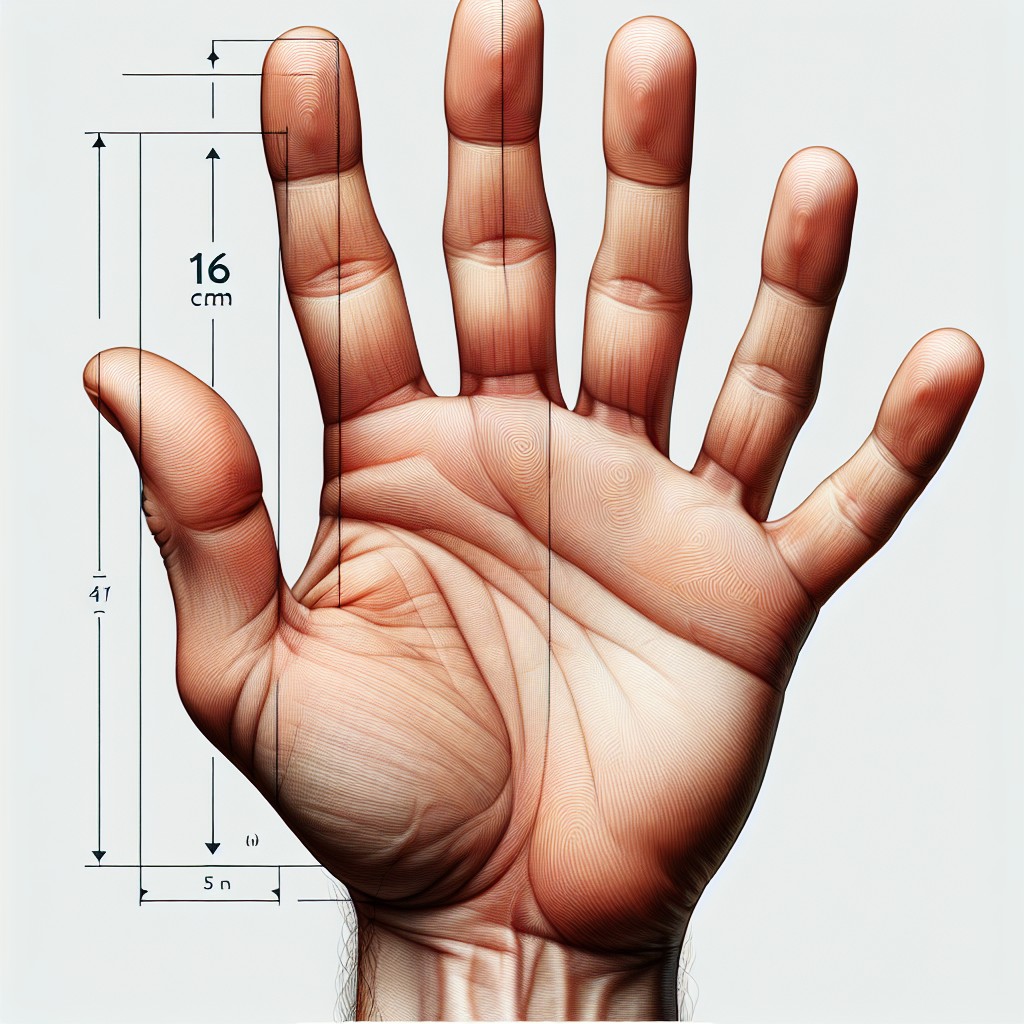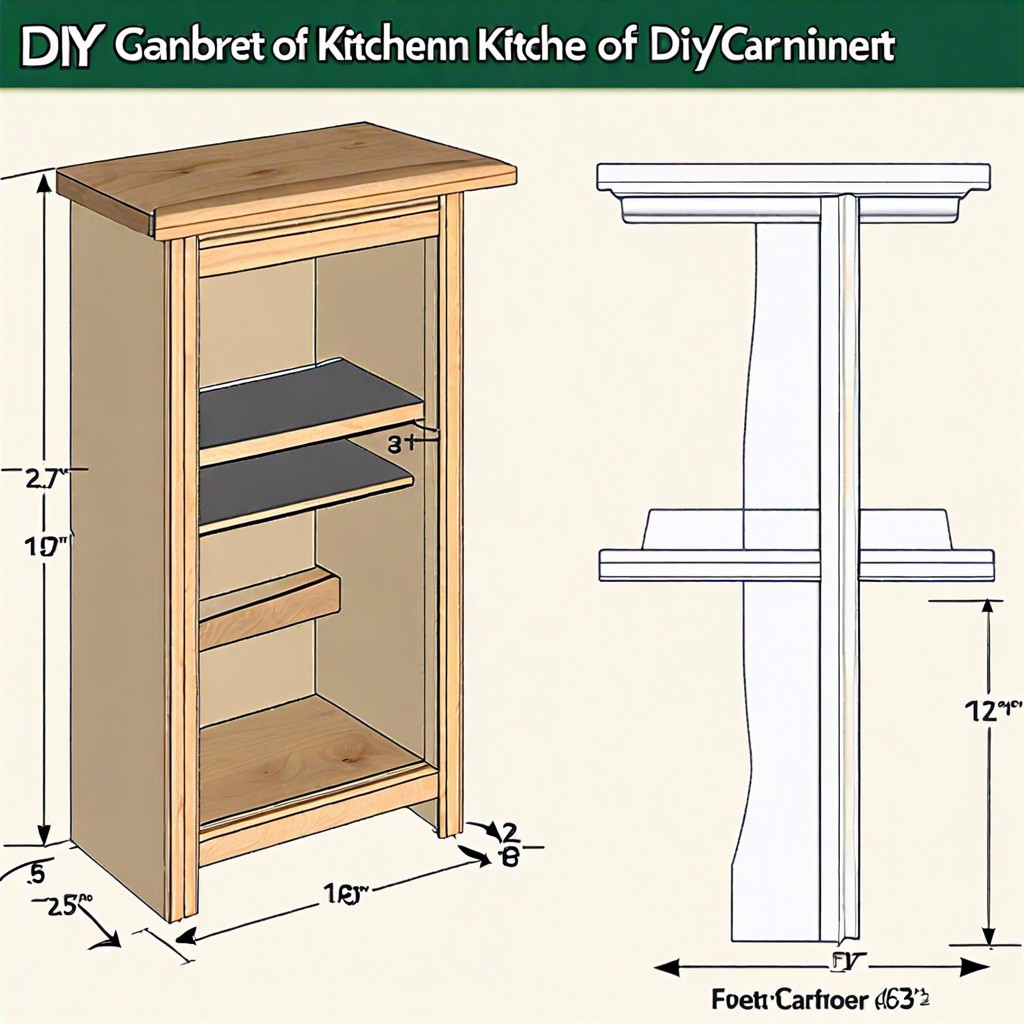Last updated on
Unravel the mystery of metric measurements as we dive into understanding the magnitude of 16 centimeters and easy ways to convert it into the imperial system.
Key takeaways:
- 16 cm is roughly the length of a standard pencil.
- It’s also comparable to the size of a smartphone.
- A stack of six coasters is approximately 16 cm tall.
- 16 cm is slightly shorter than the span of an adult’s hand.
- In inches, 16 cm is approximately 6.3 inches.
What's Inside
Understanding 16 Centimeters in Everyday Objects

Imagine a standard pencil, its length usually hovers around the 16-centimeter mark, serving as a quick visual reference.
In the digital realm, smartphones often fall within this size bracket, making them a tactile example for grasping the dimension.
For culinary aficionados, a standard dining spoon nearly spans this length, offering another familiar comparison.
If you’re looking for a more precise visual, a stack of about six standard-sized coasters will approximate the measurement at hand.
Through these items that weave into the fabric of daily life, the concept of 16 centimeters becomes tangible and easily relatable.
16 Centimeters in Relation to the Human Body

To grasp the size of 16 centimeters, observe the human body, a treasure trove of relatable benchmarks. For instance, the average adult’s handspan (from the thumb to the pinky) measures roughly 19 cm, making 16 cm slightly shorter than that stretch. Imagine a newborn baby’s foot, which often falls between 7.6 to 10 cm; 16 cm is about the length of one and a half of those tiny feet.
If you consider the width of an adult’s wrist, it usually hovers around 6 cm, so picture nearly three wrist widths side-by-side, and you’ve got 16 cm. A credit card, a familiar item often tucked in our wallets, stands around 8.5 cm in height; stack two of them end-to-end for a decent visualization of the measurement in question.
These body-related comparisons provide a tangible sense of 16 cm’s dimensions and show how it relates to the scale of our daily lives.
16 Centimeters to Inches Conversion: A Brief Guide
To convert 16 centimeters to inches, remember the fundamental conversion factor: one inch is equivalent to 2.54 centimeters. Using this, we can simply divide 16 by 2.54. Doing the math, 16 centimeters is approximately 6.299 inches.
Imagine a smartphone screen, which often ranges between 5 to 6 inches diagonally—it’s slightly longer than the breadth of the display.
You can also use a quick reference approach by keeping in mind that 15 centimeters is nearly equal to 6 inches, thus 16 centimeters adds just a bit more length.
For a mental image, picture a standard pencil, which typically measures about 7.5 inches in length. Sixteen centimeters would measure just short of this, lacking around an inch and a quarter.
16 Centimeters: Visual Comparisons in Common Household Items
To grasp how long 16 centimeters is, consider a standard pencil, which measures approximately 19 cm, so envisioning a pencil sans its eraser gives a good approximation.
Similarly, the width of a standard A5 sheet of paper is just shy of this length at 14.8 cm – picture it with a sliver more on each side.
The diameter of a typical CD or DVD is quite close, at about 12 cm; imagine it with a 2 cm border to reach the full 16 cm.
For culinary enthusiasts, a typical block of butter with its dimensions 12 cm by 7 cm provides another point of reference; by shaving off a centimeter from its length, you are left with a width of about 16 cm.
These everyday items offer tangible benchmarks and make the abstract dimension of 16 centimeters easy to visualize and understand.
Practical Applications: When You Might Need to Measure 16 Centimeters
In the realm of arts and crafts, precise measurements are crucial, and 16 cm often marks the perfect length for homemade bookmarks—an ideal project for both adults and children alike. Tailors frequently encounter this measurement as it corresponds to a common sleeve or hem length adjustment for a custom-fit garment.
In the world of interior decorating, this dimension may dictate the spacing between wall-mounted shelves, ensuring an aesthetic balance and functional storage solution. For aspiring chefs, knowing this measurement assists in cutting pastry dough accurately for consistent baking results.
In the technological sphere, smartphone screens hover around this length, giving a tangible understanding of the device’s size before purchasing. Gardeners measuring plant spacing, particularly for cultivating root vegetables, also benefit from this knowledge for optimal growth.
For the fitness enthusiasts, the width of a standard yoga block measures 16 cm, contributing to improved alignment and support during various poses. This measurement may also come in handy for setting up a makeshift home gym, as it’s approximately the height of a step for step aerobics.
Convert 16 Cm to Common Lengths
To picture how 16 centimeters stacks up against other units of measurement, here’s a quick conversion guide:
- Inches: There are roughly 2.54 centimeters in an inch. This means that 16 centimeters is equivalent to approximately 6.3 inches. Handy for when you’re relating to many US-standard measurements in everyday life.
- Feet: Given that one foot equals 12 inches, by converting our previous result, we find that 16 centimeters is about 0.52 feet. Useful to know if you’re estimating short distances or heights.
- Meters: Since a meter consists of 100 centimeters, 16 centimeters represent 0.16 meters. This conversion is crucial in contexts requiring metric-system precision, such as scientific research.
- Millimeters: One centimeter equals ten millimeters. Therefore, 16 centimeters are the same as 160 millimeters. An easy conversion for tasks that deal with fine measurements, like jewelry or engineering design.
By anchoring 16 centimeters to these more common lengths, it becomes a tangible figure rather than an abstract number. Consider these conversions tools in your everyday toolkit, making the metric world one step more relatable.
16 Centimeter Conversion Table
Diving into the specifics, a conversion table is invaluable for understanding how 16 centimeters measure up against other units. For instance, if you’re conversant with inches, knowing that 16 centimeters equates to roughly 6.3 inches can help you visualize the length better. This is particularly handy if you’re working on a project that requires precision in multiple units.
In the same vein, if you’re looking to comprehend how many millimeters are in 16 centimeters, the answer is a simple multiplication away – 160 millimeters. This detail is critical for engineers, designers, or anyone needing granular precision.
Should you need a broader comparison, like how many meters 16 centimeters represent, divide by 100 – a straightforward calculation that gives you 0.16 meters. This conversion is often used in sports or outdoor measurements where meter units are more common.
Lastly, for those keen on nautical or aeronautical distances where feet are more usual, 16 centimeters translate to about 0.525 feet. Understanding these conversions can be quite useful when dealing with altitudes or depths.
Always remember, a conversion table is not just about numbers but a way to bridge understanding across different metric and imperial units for clear and effective communication. Whether you’re shopping online for the perfect-sized picture frame or comparing gadget dimensions, knowing these conversions can save time and ensure accuracy.
Metric and Imperial Units
Navigating the differences between metric and imperial units can initially seem daunting, but it’s easier than you might think. The metric system, which uses centimeters, meters, and kilometers, is based on multiples of ten, making conversions straightforward. Most of the world uses metric units, emphasizing their global importance.
In contrast, the imperial system, prevalent in the United States, uses inches, feet, and miles. While not as neatly divisible, the imperial system is ingrained in American culture and daily life. For those used to thinking in inches, remember that there are 2.54 centimeters in an inch.
To visualize this distinction, consider a simple pencil. Labeled in centimeters, one might measure its length at about 19 cm, while in imperial units, it’s closer to 7.5 inches. When converting from imperial to metric, multiply inches by 2.54 to find the centimeter value. Conversely, to convert from metric to imperial, divide centimeters by 2.54 to get the measurement in inches.
Understanding these two systems will serve you well, whether you’re embarking on global travel, engaging in international commerce, or simply working on a craft project that calls for diverse measurements. Keep in mind that accuracy is key, and using a conversion tool can help eliminate any guesswork.
References
For a deeper dive into how measurements like centimeters stack up against other units, particularly inches, feet, and meters, reputable resources are invaluable.
The International Bureau of Weights and Measures provides definitive information on metric units, ensuring accuracy in comparisons and conversions.
Additionally, educational websites like Khan Academy offer tutorials on measurement systems, helping to solidify comprehension.
For those who frequently toggle between metric and imperial units, conversion tools such as online calculators or smartphone apps can be practical and time-saving.
These resources are particularly useful when working on projects that require precise understanding of different measurement standards.
For specific conversions, referencing a detailed conversion table can eliminate guesswork and provide quick, reliable data at a glance.
Always ensure the source’s credibility when referencing conversion figures to maintain the integrity of your measurements.
FAQ
What does 1 cm look like?
A standard pencil’s width, the length of a staple, five stacked CDs or DVDs, a standard notepad’s thickness, or half of a U.S. penny’s diameter can all roughly represent 1 cm.
How big is a CM example?
An object the size of a centimeter could be likened to a Cheerio, which typically measures 1 cm in diameter.
In what real-world objects might we typically encounter a 16 cm length?
A 16 cm length is commonly found in everyday objects including a typical short ruler, the diameter of a medium-sized dinner plate, or the length of an adult hand.
How does a 16-cm measurement compare to common household items?
A 16-cm measurement is roughly the length of a standard pencil or the width of a piece of A5 size paper.
How can we visualize the size of a 16 cm object without a ruler?
To visualize the size of a 16 cm object, consider that it’s a bit shorter than the long side of an A5 sheet of paper (21 cm), slightly longer than the width of a regular postcard (14 cm), or roughly the length of a standard pen (15 cm).




